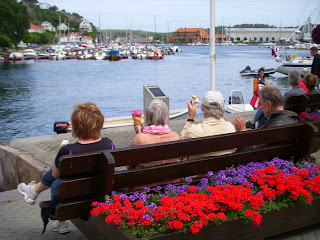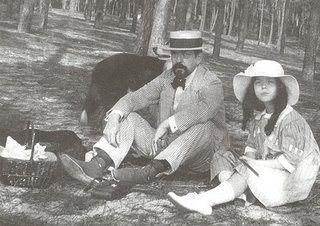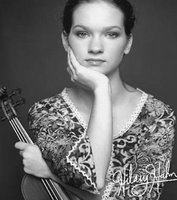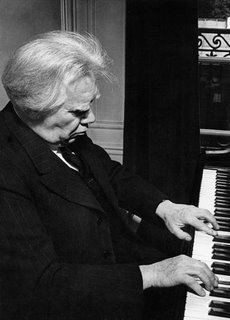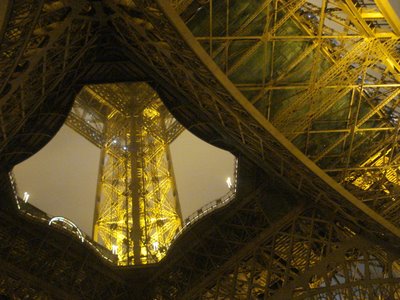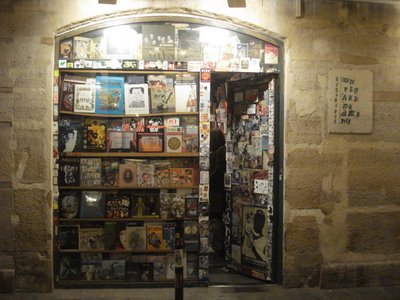
Through miraculous good fortune, I woke up today on the Southern coast of Norway. And it’s a morning with such sparkle -- so blue and so bright -- that I’m stunned. There are quick and wonderful breezes coming off the sea, charged with sunlight and salt. (I’d be happy to have these breezes in my hair forever.) I’m barefoot with my coffee, on the deck of a little guest house, a short walk from the harbor. I can’t get enough of the sound of the seagulls laughing in the wind. The sky is endless.
This is the little, white-washed town of Risør, with its wooden houses nestled together on small, airy streets.




I recognize this feeling – everything is soaked in an atmosphere of rugged charm that I know from time spent on the North Shore of Massachusetts. But there is a mysterious and wonderful sense of ancient history here.
Throughout the day, happy tourists amble about. Bicycles float past the harbor and motorscooters buzz in and out. But there’s something different here. Look closely at some of those happy people and you’ll begin to recognize faces … isn’t that Christian Tetzlaff, the violinist? The young pianist Nikolai Lugansky comes around a corner … baritone Thomas Quasthoff seems to be talking with someone by the church – and the inspired Norwegian pianist Leif Ove Andsnes is everywhere.
This is the
Risør Chamber Music Festival. I’ve come here to gather up some of its sights and sounds. In September, I’ll present a series of radio programs on WGBH 89.7 with concert recordings and special interviews. But now I can’t resist sharing a little of the atmosphere.
Last night I experienced the summer's midnight twilight. It arrives, gets stuck, and shimmers –- on hold – until somewhere in the wee morning hours it must get overtaken by the sunset. Magic. A half-moon hung over the harbor and laid out a diamond path of light, just for extra effect. This came after an astonishing nighttime concert (10:15pm. It was one of 22 concerts being offered day and night during the six days of the festival. Leif Ove Andsnes and violist Lars Anders Tomter are co-directors, and the theme they’ve given it this year is
Playful!They are aiming at finding music that evokes “Joy over the superhumanity of machines … A world of adventure; of mechanics, play and invention.” So Haydn, Antheil, Ives and Ligeti all work together to transform Risør. There will even be a sampling expert(
Jan Bang)who will be transforming Haydn (and the
Orion Quartet) with electronics.
It is a delicious shock to walk up the little hill to Risor’s white-spired church
and find two 9-foot German Steinways being installed at the front


on which Marc-André Hamelin and Leif Ove Andsnes are rehearsing Stravinsky’s Rite of Spring, arranged by the composer for one piano, and further colored and nuanced for two pianos by the pianists ...
[movie clip here]
And for a little taste of the marvelously quirky programming that pays such joyous attention to the thrill of machines, toys, humans and life, tonight's concert
features Leroy Anderson's 1950 entertainment "The Typewriter", Haydn's Symphony 101, Antheil's Death of the Machines, Beethoven's Grosse Fuge, and Ligeti's Poème Symphonique for 100 metronomes.
Please keep checking back -- I'll be writing more whenever I can.







